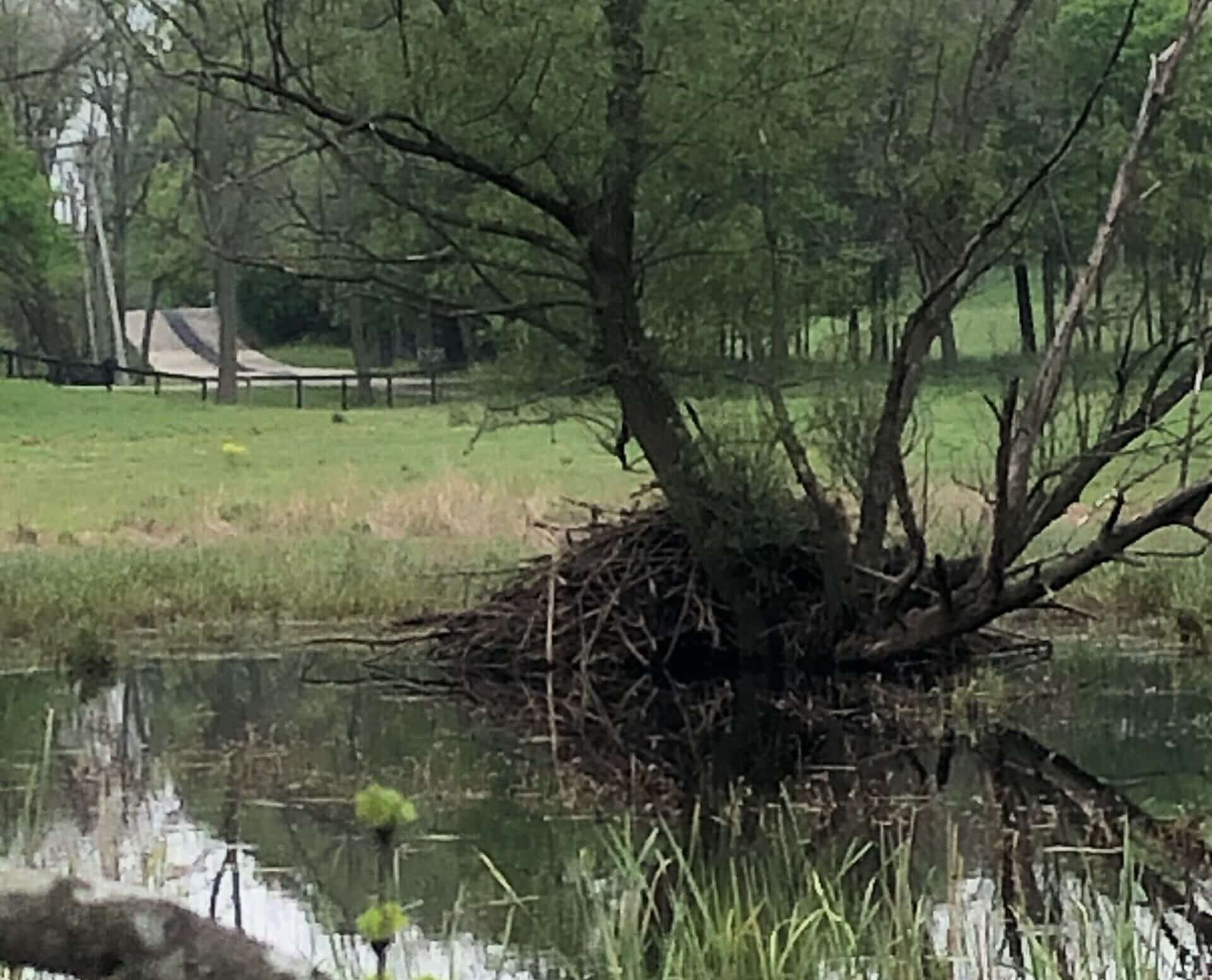
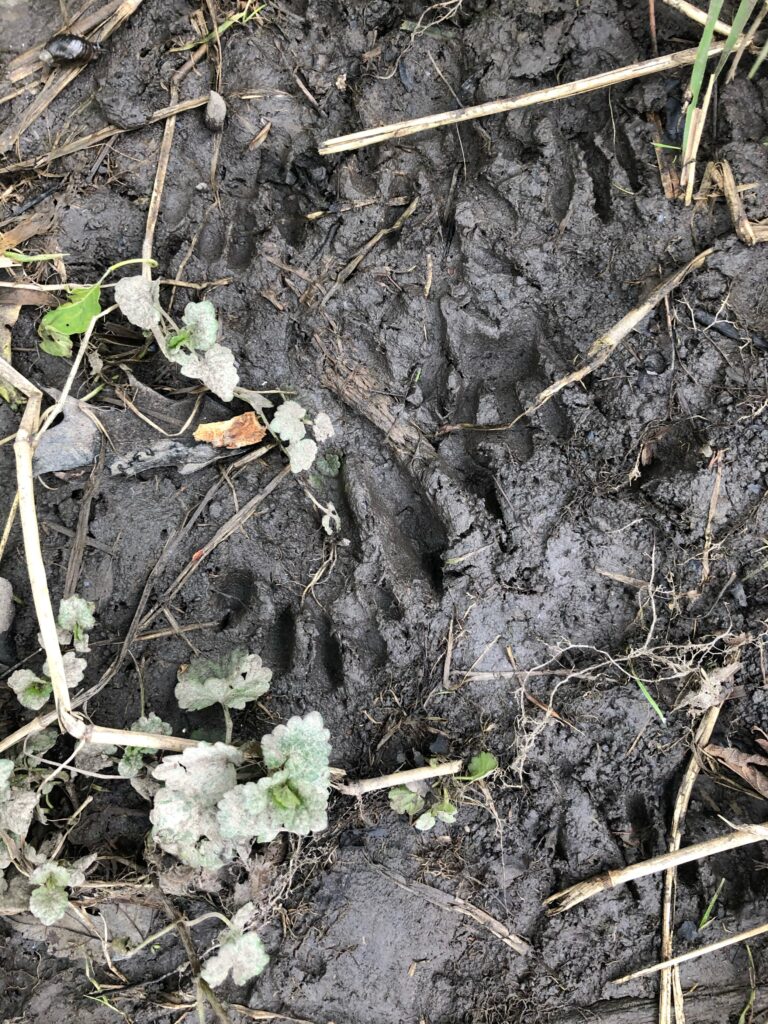
If you’ve noticed beaver tracks on your property, it could be a sign that you have a beaver problem. Thanks to their large webbed hind feet and smaller front paws, beavers have distinct tracks that leave easily discernible prints near water sources like ponds, streams, or along muddy banks. Since beavers are nocturnal, you’re more likely to spot their small front tracks and triangular hind tracks than you are to spot the animals themselves.
If you do happen to see one, the beaver’s appearance makes it easy to identify. Beavers are fairly large, featuring a stocky body with yellowish-brown to black fur, webbed rear feet, and a broad, flat tail.
Unfortunately, finding beaver tracks in your yard isn’t a good sign. These rodents can cause all sorts of property damage, as they’re known for felling trees and building dams that can cause flooding. So, if you suspect beavers are building a home on your property, it’s important to act quickly. Contact Critter Control to humanely remove beavers and prevent further damage.
Beaver Tracks in Yards
If you live near a body of water, you might notice signs of beavers on your property. Beaver tracks indicate the presence of these rodents nearby. You might spot their prints in various places, including in muddy areas next to rivers, streams, and marshes, often traceable back to the beaver’s home.
What Do Beaver Footprints Look Like?
When the conditions allow for clear footprints, like in mud or snow, beaver footprints are distinct. Their webbed hind feet leave behind triangular prints, making them fairly easy to identify.
As the beaver moves, its front paws create hand-like indents. The front indentations are usually two to three inches in length, whereas the triangular hind-foot prints are usually six or seven inches long. Beavers have five toes, but usually only three or four leave discernible tracks.
Sometimes, the beaver’s tail, which drags behind it, will obscure the tracks. This is especially common in snow, so you might see a swath with a slight indentation in the snow cleared by its tail instead of paw prints. However, while beavers don’t hibernate, they’re less active in the winter, so seeing beaver trails in the snow isn’t common.
Additional Signs of Beaver Problems
While pawprints can indicate a beaver problem, they’re not always easy to see, especially in dry conditions. So, look for these additional signs that can indicate a beaver problem:
Finding Tree Damage
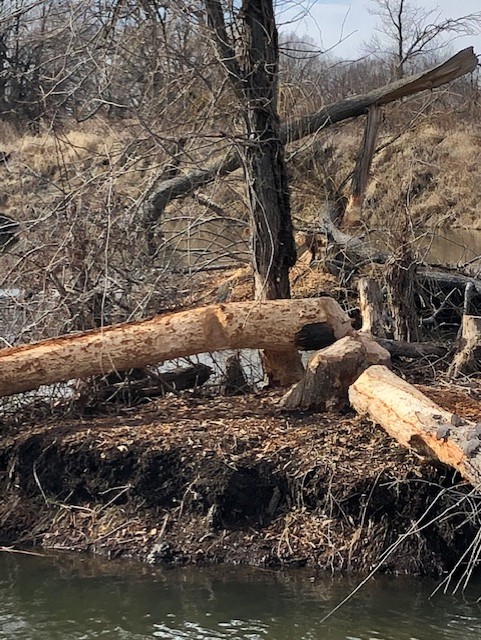
If you find beaver tracks, you’ll probably see girdled trees and felled logs, too. Beavers have a specific way of gnawing tree stumps, leaving them with a unique, chiseled point. These clues, in combination with beaver prints, are a strong indication of an active lodge nearby.
Seeing Beaver Dams and Lodges
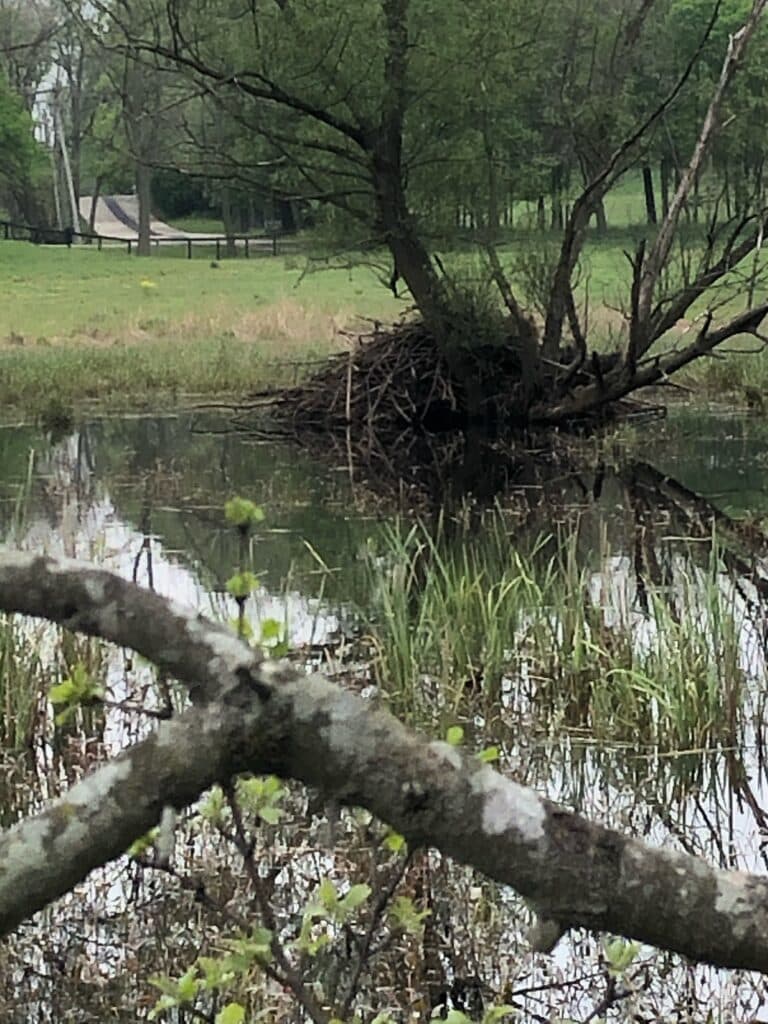
Beaver dams and lodges are a great indicator of a beaver’s presence on your property. These rodents construct their dams using branches, mud, and rocks, which create ponds that help them access food and shelter.
Beaver lodges are dome-shaped, made of the same materials, and often sit in the middle of their newly created pond. The water beyond their lodge provides a layer of protection against predators.
While beaver dams can alter water flow and create wetland areas, they can also cause flooding, property damage, and disrupt drainage systems. However, if you notice signs of damage due to a beaver dam, it’s important to remember that attempting to remove a beaver dam can be hazardous and can even be illegal in some regions of the U.S. So, it’s best to contact a wildlife professional to handle the situation safely and legally.
Spotting Beavers in Nearby Water
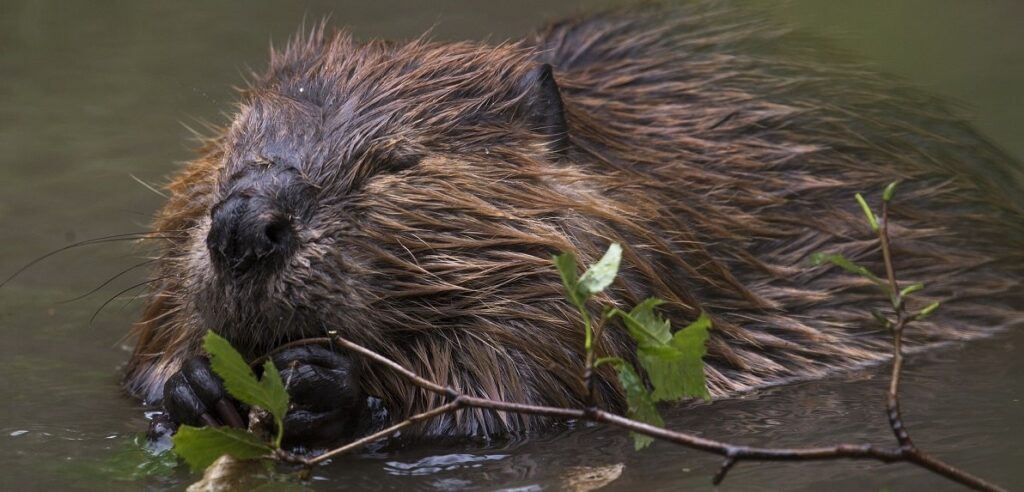
Beavers hang out in aquatic environments, spending most of their days beside lakes, rivers, and streams, where they thrive. If you think you might have beavers nearby, look for these key signs:
- V-shaped beaver ripples in the water, a common sign of beavers in water, created as the beaver swims
- Loud smacks on the water’s surface, caused by the beaver’s tail slapping
- Gnawed tree stumps and branches, especially around the water’s edge
- Mudslides or trails leading from the land to the water, created by beavers’ bodies, tails, and the tree branches they drag to their dams
- Lodges or dams partially submerged in water, often surrounded by branches and mud
Beaver Removal
There are a couple of ways to handle beaver removal and evict these rodents from your property. One option to reduce populations is to plant foliage incompatible with the animal’s diet.
Traps are another option, but most are dangerous and can be inhumane. On top of that, you’ll need to know how to set them properly to ensure success, and once you catch a beaver, you’ll need to release the animal safely. Dangerous beavers aren’t common, as they’re usually not hostile, but they can exhibit aggressive behaviors under the right conditions.
Contact Critter Control for Beaver Problems
Beavers can become a big problem for homeowners, especially since they can cause significant tree damage and flooding and disrupt drainage systems. So, if you suspect you might have a beaver problem, keep an eye out for the key signs of their presence, including tree damage, lodges, trails, and beaver tracks.
If all signs point to a problematic beaver presence, contact our experienced pest control pros at Critter Control. We can help you address your beaver-related problems and remedy the problems created by the beaver’s dams and lodges. Contact us today at 1-800-274-8837 or find an office near you for help evicting your unwanted rodent guests.